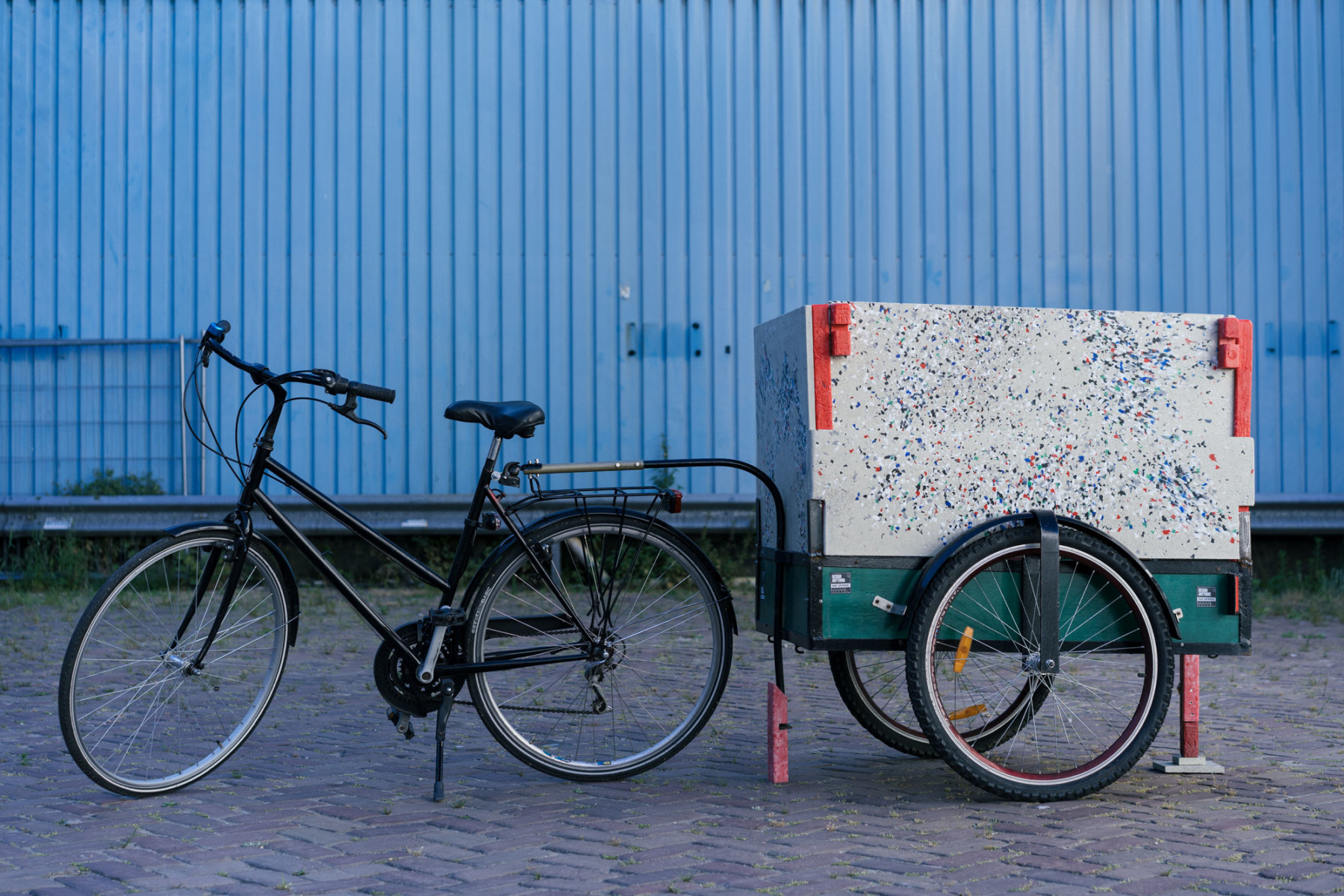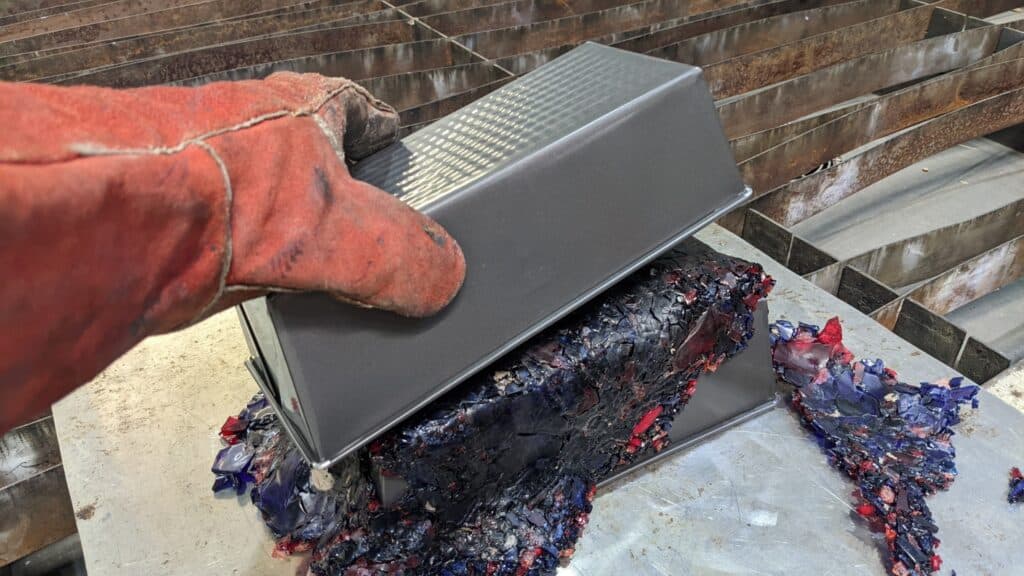
Circular-making processes in Fab Labs
Transforming acrylic offcuts into new materials
Much of our production methods are based on a linear system of creation – use – waste. These linear systems will not work to achieve the aims of a sustainable planet, let alone one that is improving.
Another way of considering sustainability is circularity. Circular processes are self-sustaining and are maintained without any additional inputs. Within them, all resources, physical and abstract, are recirculated and evolved. During a 3-month residency at Fab Lab Barcelona I, Christy, explored how to transform acrylic offcuts that are produced in the operation of the lab into new materials. Learn with me in this blog post, how to recycle plastic acrylic waste in a Fab Lab with Precious Plastic Machines.
Circular making
In recent years the prevalence of Maker Spaces has been increasing “The DIY and maker movement has materialised into physical spaces and workshops, assisted by the increase in availability and decrease in the price of domestic-scale machineries such as 3D printers and laser cutters.”1 These Maker Spaces are establishing themselves as the pioneers of circularity and the optimisation of resource utilisation. “These spaces promote the reuse and repair of products as well as localisation of supply chains; in comparison to linear consumption patterns in which products are produced ‘cheaply’ and simply thrown away.”1

Positioned at the convergence of the maker movement and circularity is Precious Plastic. This project aims “to boost plastic recycling worldwide by providing free and open-source tools and knowledge”2. These tools developed for the localised reuse of plastic rely on its decentralised community to drive improvement by encouraging the reiteration and sharing of the tools, processes and knowledge.

The circular maker movement is being developed by programs such as Pop-Machina and Pop-Machina Academy. Pop-Machina is working to highlight the importance of circularity in the maker movement in order to “promote environmental sustainability and generate socio-economic benefits.“3 The academy provides “innovative training with skills and guidance needed to successfully scope, plan, establish and manage Circular Makerspaces as core to local urban and social development activities.”4
Transforming acrylic offcuts into new materials
Research residency by Christy Cairns at Fab Lab Barcelona
Fab Lab Barcelona is a research and education centre that utilises and develops similar tools and knowledge to that of a circular maker space. In the operation of the lab and educational programs we produce offcuts of acrylic plastic (Polymethyl methacrylate). Thus far we have not had a viable process for using the offcut. As part of my 3-month residency I, Christy, explored the potential of the acrylic offcuts with the use of the Precious Plastic machines.
Alongside the physical investigations has been researching to understand the wider context of plastic recycling and acrylic use in maker spaces.
We hypothesise that our experiences with acrylic thus far are not unique, and that with the possession of Precious Plastic tools and the dissemination of knowledge it will be possible to utilise these offcuts.
To achieve this we had 3 points of consideration:
- How much of a problem is waste acrylic in maker spaces
- What are the material properties of acrylic
- What are the limitations and potentials of acrylic recycling and local-scale plastic recycling more generally
To answer the first concern, we spoke with Ateneus de Fabricació to learn what their experience is within their Barcelona-based Fab Lab network.
Ateneus de Fabricació is a fantastic example of the embodiment of a circular maker space. They of course aim to be as sustainable as possible and implement practices such as Precious Plastic. But they also have circular processes for how knowledge and labour are shared.
Access facilities are free, all that is asked is that in repayment the user is able to share and feed the knowledge they have developed back into the community. This creates a circular system of knowledge sharing and development, and this is really important.
With the other two concerns, I have sat down for coffee with plastic recycling experts Fos to learn to understand more about the finite details that need to be considered when working with recycling plastics.
They opened my eyes to all the minute variables that can affect the final outcomes, and what processes are available to try to control them. As is often the case with utilising used materials, it isn’t always possible to receive them in a consistent state and processes like cleaning and pre-drying at a low temperature before use is important to get the best results.
Throughout my conversation with FOS it became apparent that I didn’t know enough about the material I was trying to use. They recommended that I become an “acrylic nerd” and try to understand as must as possible about the material I was working with. What its molecular makeup is. What the details of the manufacturing process are. Whether it retains moisture and how much.
Conducting physical experiments
From off-cuts to sheets
I had not previously used anything like the Precious Plastic machines that are available at Fab Lab Barcelona so my initial experiments also involved understanding the operation of the machinery. This is common when using Precious Plastic machines as typically they are produced locally and adapted to suit the tools and materials available – so each one can be different.
During these initial experiments, I also attempted to understand the material and how it could be processed by the Precious Plastic machines. There are material data sheets available from manufacturers but when working with ‘waste’ material you can not be sure of the origin of the material and can take nothing for granted. I was able to use general information, such as acrylic’s melting temperature of 160 degrees Celsius4, to suggest a starting point for my experiments.
My initial experiments concentrated on 3 variables. The temperature of the sheet press, the amount of pressure being applied, and the length of time the material was exposed to heat and pressure.
In addition, I wanted to test the potential of the sheets that I produced by heat forming them by hand, using gravity and over objects. I found that in heat forming, weaknesses, where the sheets hadn’t become homogenous sheets of material, were exposed. The sheet would break apart in different directions, almost as if there was tension within the material.
At this moment I have produced a video and step-by-step tutorial for the most successful process of creating a sheet from acrylic pieces.
For future experiments and adaption by others, I would suggest exploring the following areas:
- Measured shredding technique to explore whether the size of the shredded material has an impact on the process.
- Calibration of the sheet press to be confident of settings and to be able to reliably reproduce outcomes.
- Use higher quality molds to explore how the mold affects the final result.
- Continue to explore the potential of the sheets with processes like laser cutting and heat forming.
For me it feels like circularity in Maker Spaces has great potential and a role to play in the future. Among Fab Lab Barcelona, Ateneus de Fabricació, FOS and others that have reached out since I began my explorations, there is a community of people driven to close the loop of production methods and make zero waste a reality.
References
- https://fablabbcn.org/projects/pop-machina
- https://preciousplastic.com/about/mission.html
- https://fablabbcn.org/projects/pop-machina
- https://fablabbcn.org/projects/pop-machina
- https://www.creativemechanisms.com/blog/injection-mold-3d-print-cnc-acrylic-plastic-pmma








